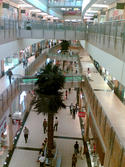Newgeography.com - Economic, demographic, and political commentary about places
One of the principal arguments used against suburbanization is that its infrastructure is too expensive to provide. As a result, planners around the high income world have sought to draw boundaries around growing urban areas, claiming that this approach is less costly and that it allows current infrastructure to be more efficiently used.
Like so many of the arguments (a more appropriate term would be “excuse”) used to frustrate the clear preferences about where people want to live and work, the infrastructure canard holds little water upon examination. read more »
This month’s off year elections sent one message to Washington that has been heard loud and clear. Voters expect Congress to focus on the economy, especially employment, and take decisive and affirmative steps to deal with both the causes and ravages of the greatest economic downturn in the U.S. since the Great Depression. As the Obama administration considers a variety of new proposals to help bring down the unemployment rate, one key constituency is raising its voice and asking for a return on the investment it made in his presidency.
Members of the Millennial generation, born between 1982-2003, who were eligible to vote in 2008 went for Barack Obama over John McCain by a 2:1 margin and made up over 80% of the President’s winning margin. read more »
For many locals, Silicon Valley surrendered to the tyranny of development when it lost its last major fruit orchard in 1996. Olson's family cherry orchards, a 100-year player in the valley's agricultural history, shut down its main operations, and Deborah Olson mournfully told a local reporter then, "We're down to 15 acres at this point." There is a happy ending. With community support, the Olson family continues to sell its famous cherries at its fruit stand in Sunnyvale, Calif.
Ultimately, Silicon Valley's history is predicated on a continual progression from industrial to post-industrial. Adding to the chaotic ferment and success, multiple sectors co-exist at different stages of maturity at any given moment. read more »
Has evidence-based planning fallen from grace in favour of catchy slogans and untested assumptions? In the case of urban planning, arguably that is just what’s happened. The evidence, in Australia at least, is worrying.
“We must get people out of cars and onto public transport.” “We must stop urban sprawl and the consumption of valuable land.” “We must build higher density communities to achieve sustainable environmental outcomes.” Phrases like this are now de rigueur across many discussions about urban planning in the media, in politics and in regulatory circles in Australia. They are rarely challenged on the basis of what the actual social, economic or scientific evidence is really saying. read more »
Everything that is the matter with America’s transportation and energy policies can be understood by attempting to travel with a family from New York City to Bangor, Maine.
I use Bangor for my example — although places like Louisville, Columbus, Lynchburg, and Wheeling would work just as well because — for better and for worse — I, (a New Yorker) married into a Maine family in the early 1980s. For the last twenty-five years I have devoted countless waking hours to plotting connections to family reunions, as I have once again done for this Thanksgiving. read more »
If Indian Prime Minister Manmohan Singh wants a taste of home during his visit to Washington this week, he might consider a trip to McLean, Va., home to the region's largest indoor mall, Tysons Corner Center. After all, there are few groups more mall-crazy than India's expanding affluent class.
Back here in the U.S., urban boosters and planners like to predict that malls are "vanishing." But while consumer-deflated America may suffer from mall fatigue and a hangover from overbuilding, much of the developing world has experienced no such malaise. In 2000, for example, India was virtually mall-less. Today it has several hundred, with scores of new ones on the drawing boards. read more »
It's an interesting puzzle. The “cool cities”, the ones that are supposedly doing the best, the ones with the hottest downtowns, the biggest buzz, leading-edge new companies, smart shops, swank restaurants and hip hotels – the ones that are supposed to be magnets for talent – are often among those with the highest levels of net domestic outmigration. New York City, Los Angeles, San Francisco, Boston, Miami and Chicago – all were big losers in the 2000s. Seattle, Denver, and Minneapolis more or less broke even. read more »
I have never lived in New Jersey. Indeed, of the 49 states where I have driven a car, New Jersey was 47th or 48th on the list. And it is only in the last couple of years that I've lived close enough to visit the state regularly – I now live less than an hour from Mahwah.
Years ago, I made some initial hypotheses about the Garden State:
1. New Jersey is extraordinarily wealthy.
2. New Jersey has the best highway system in the country.
3. New Jersey deserves the moniker "The Garden State."
4. New Jersey embodies the American Dream.
Let's see how these have withstood the test of time. read more »
During the first ten days of October 2008, the Dow Jones dropped 2,399.47 points, losing trillions of investor equity. The Federal Government pushed TARP, a $700 billion bail-out, through Congress to rescue the beleaguered financial institutions. The collapse of the financial system was likened to an earthquake. In reality, what happened was more like a shift of tectonic plates.
*********************************** read more »
|






















